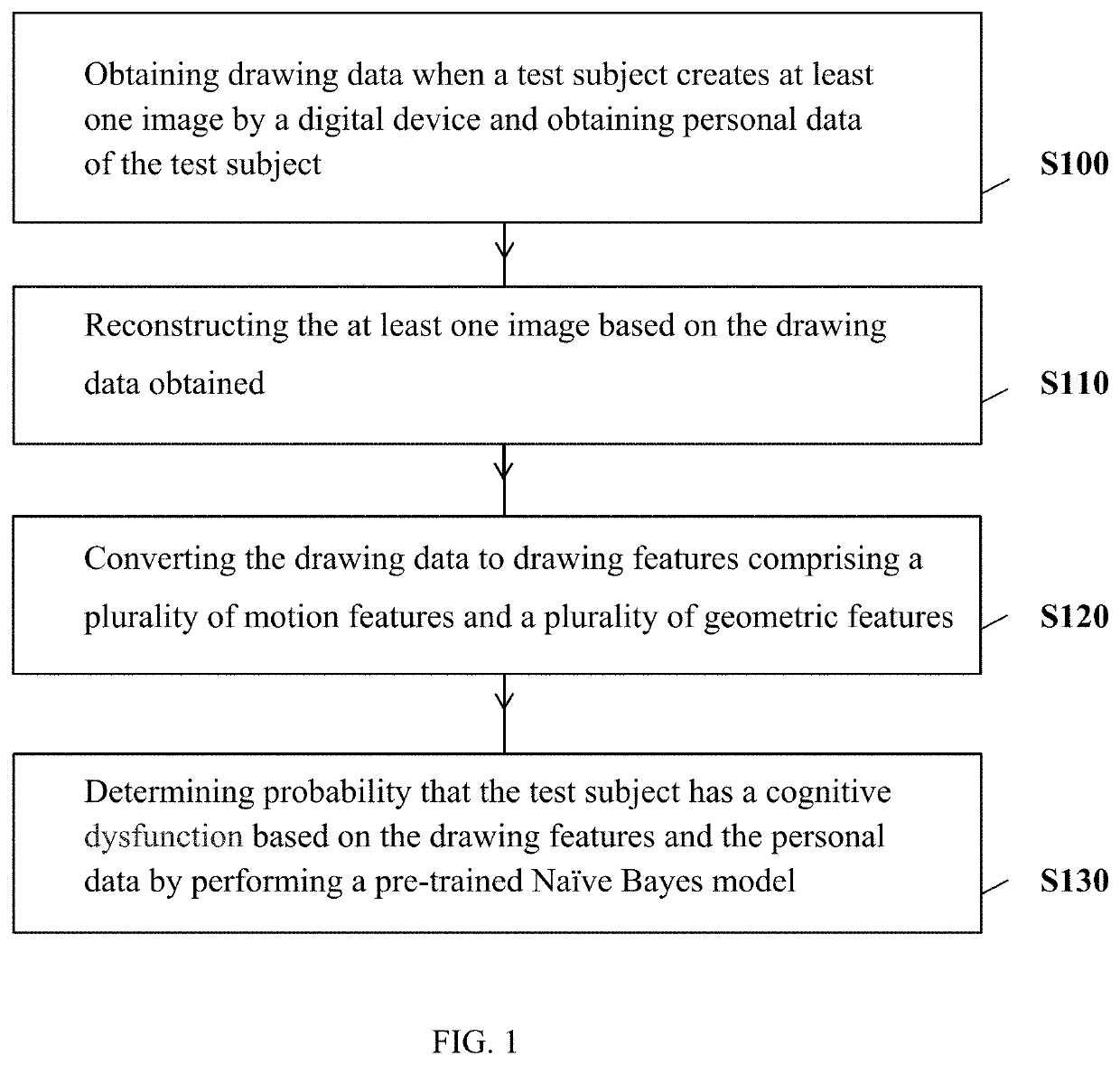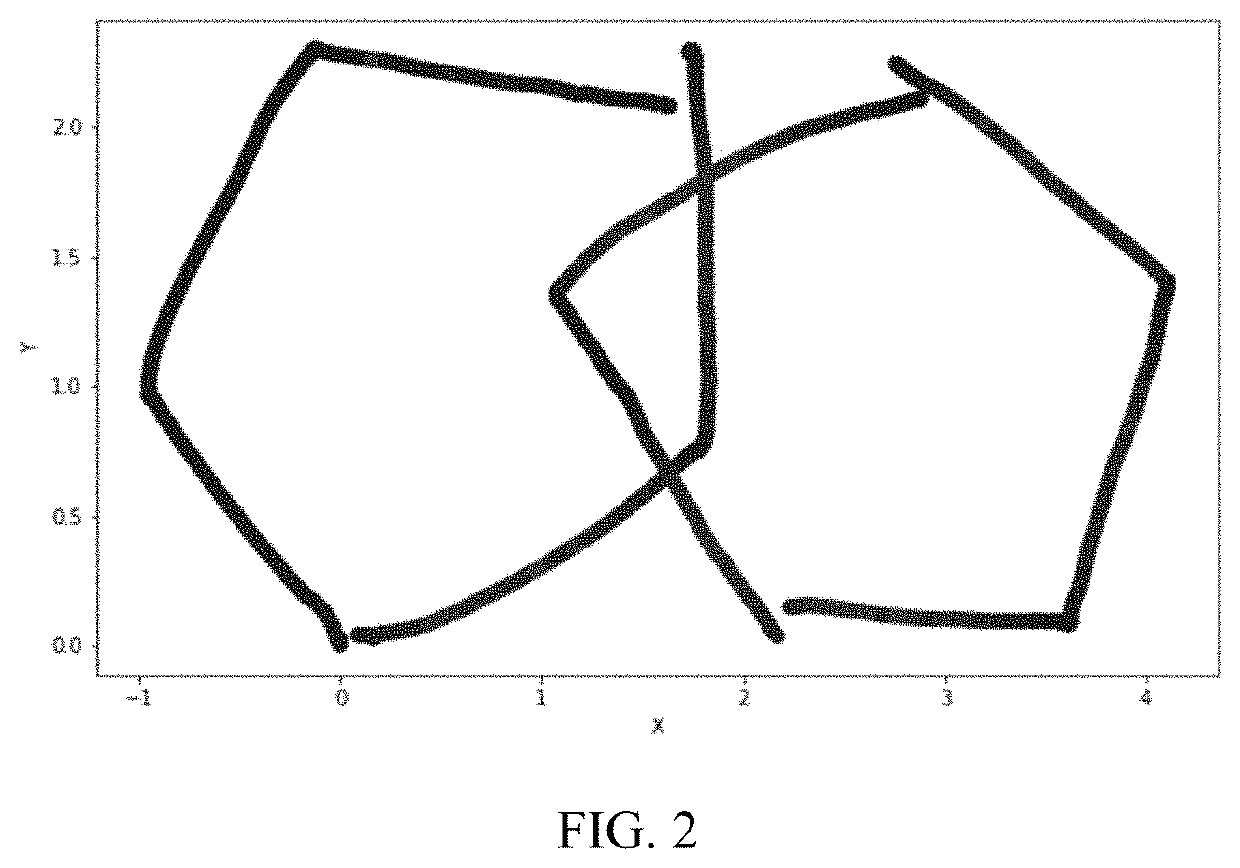Methods based on an analysis of drawing behavior changes for cognitive dysfunction screening
a cognitive dysfunction and behavior change technology, applied in mental therapies, instruments, applications, etc., can solve the problems of test subjects with dementia that require significantly more time to complete tasks, poor performance in dt can reflect defects, and test subjects with dementia can be misdiagnosed, so as to save the effect of prediction
- Summary
- Abstract
- Description
- Claims
- Application Information
AI Technical Summary
Benefits of technology
Problems solved by technology
Method used
Image
Examples
Embodiment Construction
Definition of Terms:
[0031]1. Motion features: a set of variables related to a drawing process.
2. A group of motion features: a set of variables including either summary statistics (mean and / or maximum and / or minimum and / or standard deviation and / or median) of drawing time at a pixel or stroke or pentagon level, drawing distance at a pixel or stroke or pentagon level, stopping time at a pentagon level, or drawing speeds at a pixel or stroke level.
3. Geometric features: a set of variables related to characteristics of a final image drawn.
4. img_1: a first Principal Component score obtained from the Principal Component Analysis for the final image drawn.
5. img_2: a second Principal Component score obtained from the Principal Component Analysis for the final image drawn.
6. img_3: a third Principal Component score obtained from the Principal Component Analysis for the final image drawn.
7. Extended geometric features: a set of variables generated from the geometric features and related to...
PUM
 Login to View More
Login to View More Abstract
Description
Claims
Application Information
 Login to View More
Login to View More - R&D
- Intellectual Property
- Life Sciences
- Materials
- Tech Scout
- Unparalleled Data Quality
- Higher Quality Content
- 60% Fewer Hallucinations
Browse by: Latest US Patents, China's latest patents, Technical Efficacy Thesaurus, Application Domain, Technology Topic, Popular Technical Reports.
© 2025 PatSnap. All rights reserved.Legal|Privacy policy|Modern Slavery Act Transparency Statement|Sitemap|About US| Contact US: help@patsnap.com



